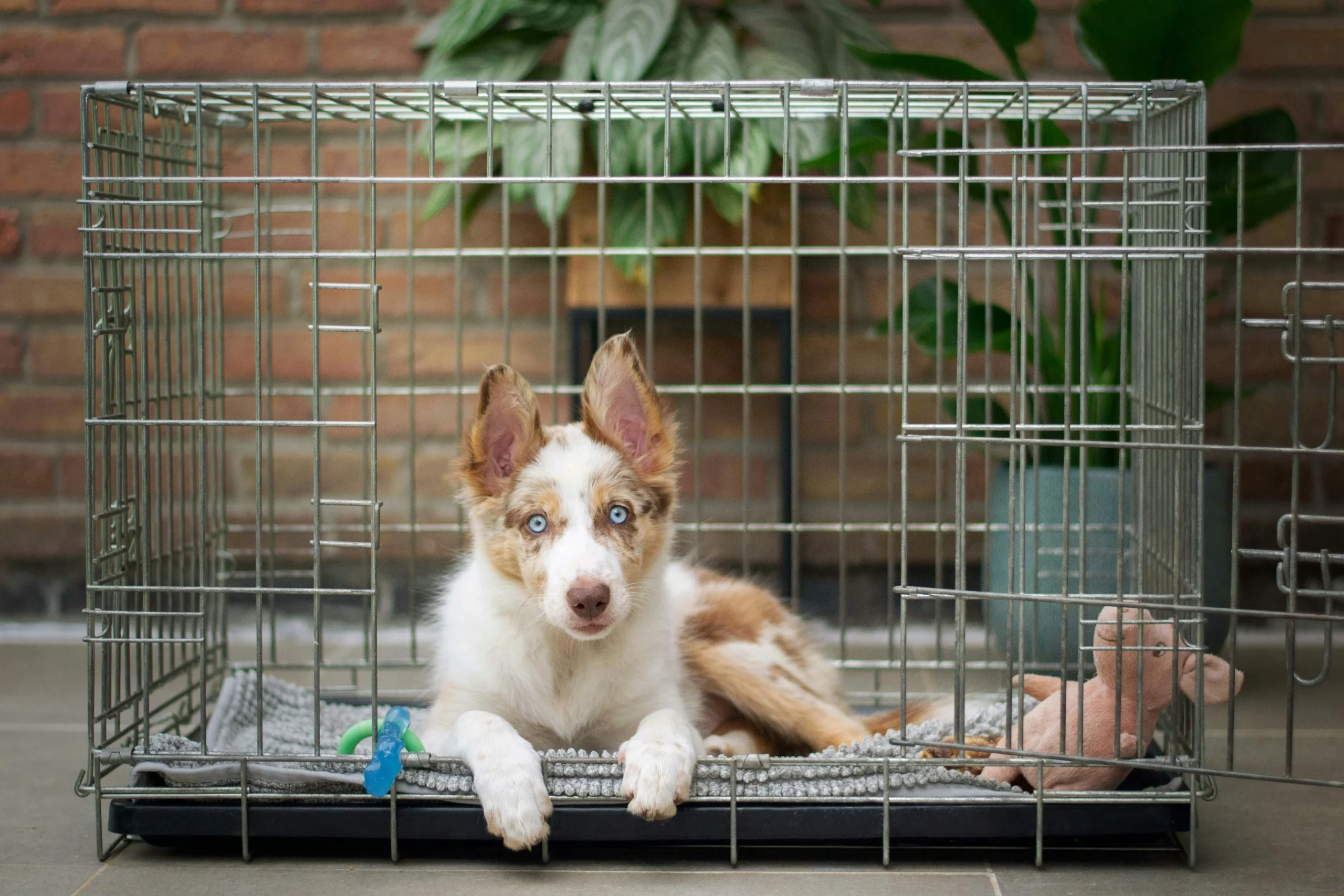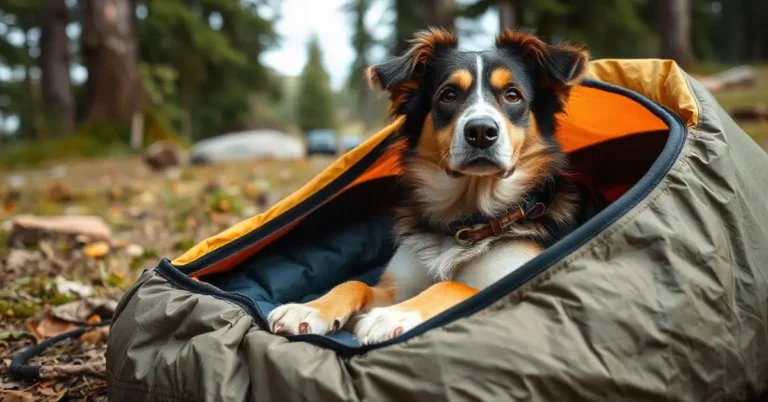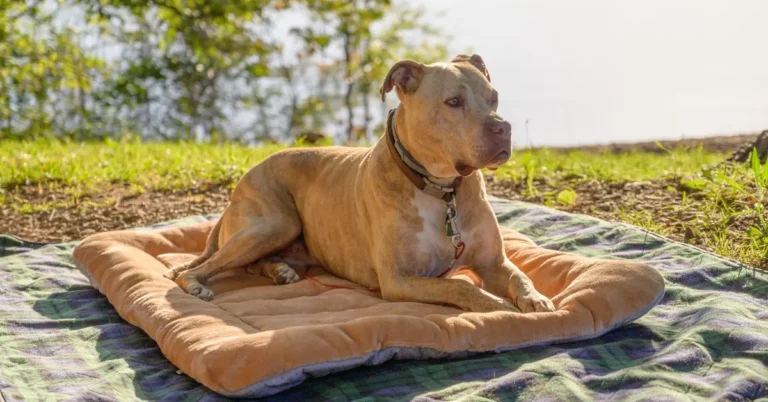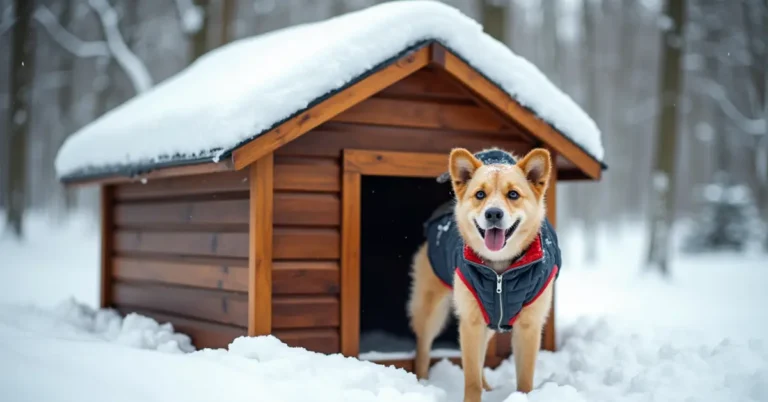Choosing the right dog crate is one of the most important decisions you’ll make as a dog owner. A well-chosen crate provides your pet with a safe, comfortable space, while also helping with training, travel, and daily life. With so many options available, picking the right one can feel overwhelming, but don’t worry! This guide will walk you through everything you need to know about choosing the perfect dog crate for your beloved furry friend.
Table of Contents
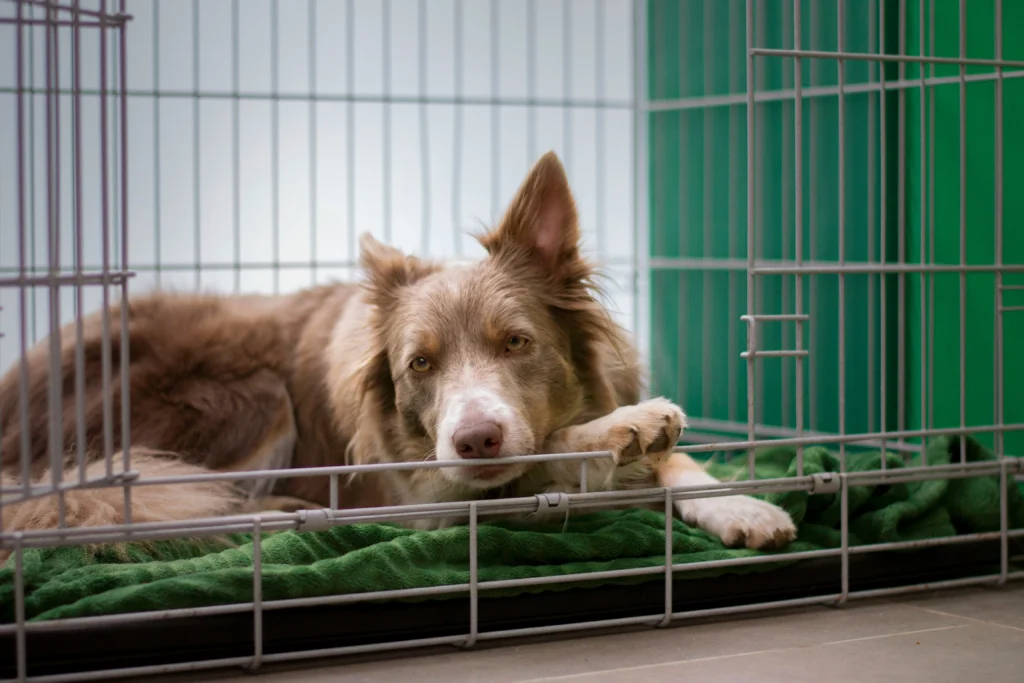
What is a Dog Crate and Why Do You Need One?
A dog crate is essentially a confined, secure space designed for your dog’s comfort and safety. It mimics a den, a natural refuge for dogs where they feel safe and protected. Crates are used for various purposes, from crate training a new puppy to providing a safe space for an anxious dog during thunderstorms or fireworks.
Crates also offer many other benefits, such as making travel easier and helping with potty training. Whether you’re dealing with a new puppy or an adult dog, the right dog crate can make a huge difference in how easily your pet adjusts to life with your family.
Different Types of Dog Crates
Not all dog crates are created equal. Understanding the different types can help you make the best choice for your dog and your home.
Wire Dog Crates
Wire dog crates are highly popular because of their durability and ventilation. They allow for maximum airflow, making them ideal for dogs that enjoy seeing their surroundings. However, these crates may not be the best option for dogs that prefer more privacy or feel anxious with too much visibility.
Plastic Dog Crates
These crates are sturdy, enclosed, and offer your dog more privacy than wire crates. Plastic crates are often used for travel, particularly air travel, because they provide better protection and are airline-approved in many cases. They’re also great for dogs that need a quieter, more secure space.
Soft-Sided Dog Crates
Soft-sided dog crates are lightweight, portable, and perfect for smaller dogs or short trips. These crates are typically made of fabric with mesh windows, providing a cozy space for your dog. However, they may not be ideal for dogs that chew or are prone to escape, as they are less durable than wire or plastic options.
Heavy-Duty Dog Crates
If your dog is an escape artist or a chewer, a heavy-duty dog crate might be your best option. These crates are built with reinforced materials designed to withstand more force and are often used for larger, stronger dogs.
Furniture-Style Dog Crates
Want a dog crate that blends into your home décor? Furniture-style crates are designed to look like end tables, nightstands, or other pieces of furniture, making them a stylish and functional addition to your living space. They often feature wooden or rattan exteriors and provide a cozy, enclosed environment for your dog.
Why Your Dog Needs a Crate
You might wonder, “Does my dog really need a crate?” The answer is yes, and here’s why:
Safety and Security
A dog crate provides a safe and secure environment where your dog can retreat when feeling stressed or anxious. Whether it’s during loud events like thunderstorms, or when you’re away, the crate gives them a space where they feel protected.
Helps with Potty Training
Crates are invaluable for potty training, especially with puppies. Dogs naturally avoid soiling their sleeping area, so a properly sized dog crate can help train your dog to hold it until they’re let outside.
Calming for Anxious Dogs
Many dogs suffer from anxiety, whether it’s separation anxiety or stress from new environments. A crate can offer a safe haven where they can relax and feel more secure. It gives them their own space to escape the chaos of the world.
Makes Travel Easier
Whether you’re traveling by car or airplane, having your dog in a dog crate keeps them safe and secure. It reduces stress for both you and your dog during trips, and many travel crates are airline-approved for easy transport.
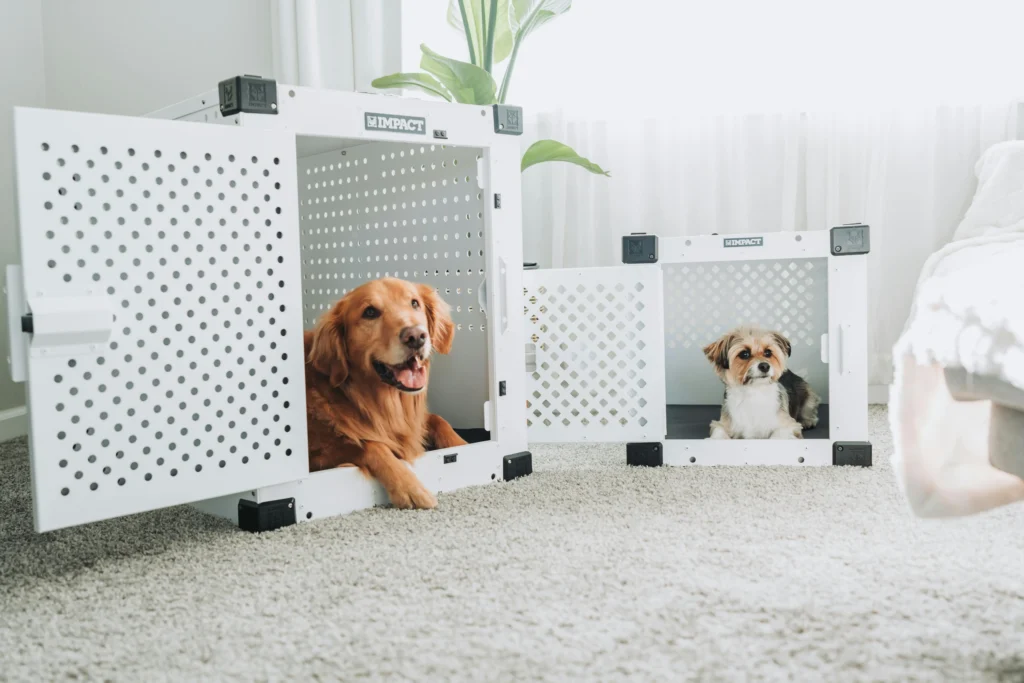
Choosing the Right Size Dog Crate
Picking the correct size for your dog’s crate is crucial for their comfort and well-being. A crate that’s too small will feel cramped, while one that’s too large won’t provide the cozy, den-like feeling that dogs love.
How to Measure Your Dog for a Crate
To find the right size crate, measure your dog’s height from the top of their head to the ground, and their length from the tip of their nose to the base of their tail. Add a few inches to these measurements to give your dog enough room to stand, turn around, and lie down comfortably.
Consider Your Dog’s Growth
If you’re crate-training a puppy, it’s important to anticipate their adult size. Many wire crates come with dividers, allowing you to adjust the space as your puppy grows. This way, you won’t have to keep buying new crates as your dog gets bigger.
Crate Size Guide by Breed
If you’re unsure which size to choose, many manufacturers offer dog crate size guides based on your dog’s breed. For example, small breeds like Chihuahuas or Pomeranians might need a crate around 24 inches, while larger breeds like Golden Retrievers or Labradors may require a 36- to 42-inch crate.
Setting Up Your Dog’s Crate for Success
Once you’ve picked the perfect crate, it’s time to set it up for your dog. A well-set-up dog crate is essential for making your dog feel comfortable and safe.
Add Bedding and Toys
A cozy crate starts with comfortable bedding. Add a soft dog bed or blanket to make the crate feel inviting. Be sure to include a few of your dog’s favorite toys to keep them entertained and help them feel more at ease in their new space.
Choosing the Best Spot in Your Home
Placement is key. Put the crate in a quiet corner where your dog can relax without too much foot traffic. Avoid placing the crate near drafty areas or in direct sunlight, which can make it uncomfortable for your dog.
Start with Crate Training
Introduce your dog to the crate slowly. Start by leaving the door open and encouraging your dog to go in with treats and praise. Crate training should be a positive experience, so never force your dog inside or use the crate as punishment.
Common Mistakes to Avoid with Dog Crates
Overusing the Crate
While crates are great tools, it’s essential not to overuse them. Dogs are social animals and need plenty of time to interact with you and explore their environment. Over-crating can lead to boredom, anxiety, and even behavioral issues.
Using the Crate as Punishment
Never use a crate as a punishment. The dog crate should be a safe, positive space for your dog. If you use it as a form of discipline, your dog will develop negative associations with the crate, making it much harder for them to enjoy their time inside.
Not Making the Crate Comfortable
If your dog’s crate is uncomfortable, they won’t want to spend time in it. Make sure there’s soft bedding inside and keep it clean. If your dog sees their crate as a cozy, inviting place, they’ll be much more likely to use it.
How Long Can Dogs Stay in a Crate?
While crates are useful, it’s important not to leave your dog in there for too long.
Crate Time for Puppies
Puppies have smaller bladders and need more frequent potty breaks. As a general rule, they shouldn’t be crated for more than 3-4 hours at a time during the day. Overnight, they can usually go a bit longer, but you should still plan for breaks if they’re very young.
Crate Time for Adult Dogs
Adult dogs can usually be crated for 6-8 hours during the day, but it’s essential to make sure they get enough exercise and bathroom breaks. No dog should be crated for extended periods without a break.
Traveling with Your Dog in a Crate
When it comes to travel, a dog crate is essential for keeping your pet safe and secure.
Choosing the Right Travel Crate
Whether you’re driving or flying, you’ll need a dog crate designed for travel. For car travel, choose a crate that can be securely strapped in. If you’re flying, make sure your crate is airline-approved with proper ventilation and security.
Crate Training Before Traveling
Before hitting the road, get your dog used to spending time in the crate. This helps reduce their anxiety during travel and makes the journey more comfortable for both of you.
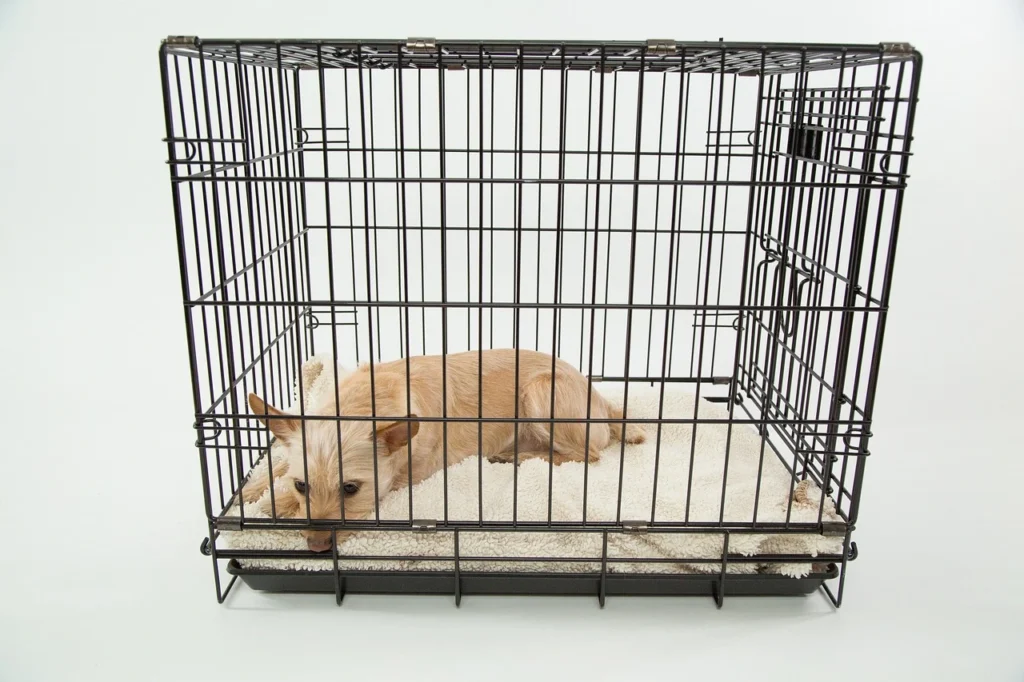
Cleaning and Maintaining Your Dog’s Crate
Regular Cleaning is Key
A clean crate is a comfortable crate. Make sure to wipe down the crate regularly with a pet-safe cleaner to remove dirt, bacteria, and odors.
Managing Odors and Stains
If your dog has an accident in the crate, clean it immediately to prevent odors and stains. A mixture of vinegar and water works well as a natural cleaning solution, or you can use specialized pet odor removers.
Making Your Dog Love Their Crate
Use Positive Reinforcement
The best way to get your dog to love their crate is through positive reinforcement. Every time your dog goes into the crate willingly, reward them with treats, praise, and toys. The more positive experiences they have, the more they’ll enjoy spending time in their crate.
Create a Cozy Environment
To make the crate a place your dog loves, create a cozy, comfortable environment with soft bedding, a blanket, and their favorite toys.
Recommendations for the Best Dog Crates
Choosing the right dog crate is essential for your pet’s well-being. Here are some highly recommended options that could be perfect for your furry friend:
- Heavy-Duty Dog Crate – Ideal for large dogs and escape artists.
- Soft-Sided Travel Crate – Perfect for smaller dogs and easy portability.
- Furniture-Style Dog Crate – A stylish crate that blends seamlessly into your home décor.
Feel free to explore these options and find the best fit for your pet. Click the links above for more details and reviews on each product!
Conclusion
A dog crate can be one of the most valuable tools in your dog’s life. From providing a safe, comfortable space to aiding in training and travel, a well-chosen crate is essential. By following the tips in this guide, you can choose the perfect dog crate for your furry friend and ensure they’re happy, comfortable, and secure. Remember, a crate should always be a positive space that your dog loves!
For more tips on creating the best environment for your dog, check out our guide on choosing the best dog beds for your furry friend.
FAQs
What is the best type of crate for a puppy?
A wire or plastic crate with a divider is typically the best option for puppies, as it allows you to adjust the space as they grow.
Can I leave my dog in the crate overnight?
Yes, as long as your dog is comfortable, they can stay in the crate overnight. Just make sure they’ve had plenty of exercise and bathroom breaks before bed.
How do I stop my dog from crying in the crate?
Make the crate comfortable and never use it as punishment. Use positive reinforcement and patience when training your dog to stay calm in the crate.
Should I cover my dog’s crate at night?
Covering the crate can help create a den-like environment that may make your dog feel more secure, especially during the night.
How do I know if my dog is comfortable in their crate?
A dog that willingly enters the crate, lies down, and remains calm is comfortable. Signs of discomfort include whining, scratching, or attempting to escape.

